Bert Ashworth and Sepia Prints
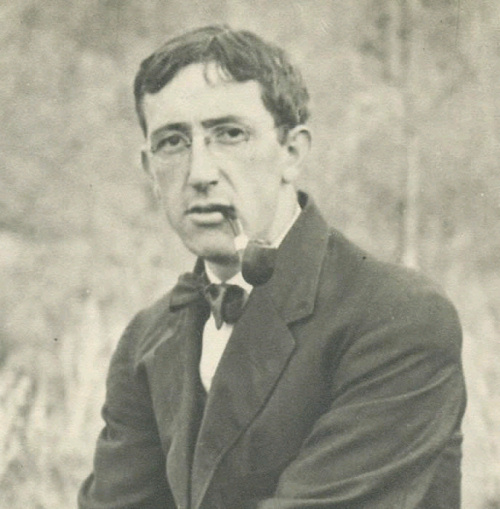
Herbert Ashworth
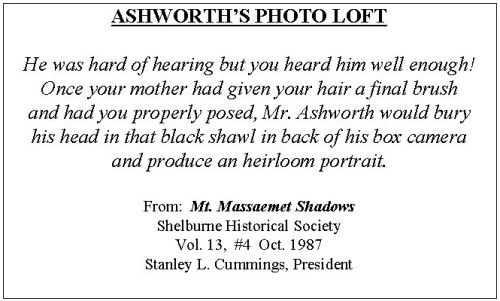
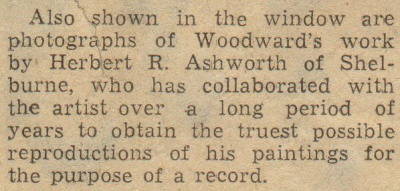
Greenfield Recorder Gazette, July 21, 1948
Once he had completed an oil painting, it was a routine practice of Robert Strong Woodward to have it photographed. (For some reason it was not his routine to have his chalk drawings photographed). The one and only professional photographer in Shelburne Falls was Herbert ("Bert") Ashworth, and RSW had a very close working relationship with him. Ashworth had taken over the photography business of Jonas Patch. His studio was located over the Baker Pharmacy on Bridge Street in Shelburne Falls where he practiced until his death in 1965.

The Ashworth Studio sign which hung on the side
of the building where his studio was located. This is
now in the Buckland Historical Society.
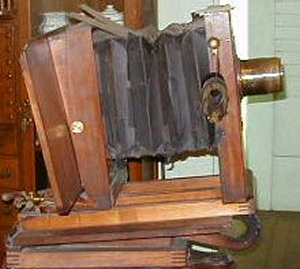
The Ashworth camera was the one previously
used by Jonas Patch and is now located in
the Buckland Historical Society. Note the iris
sizes hanging on the side of the camera.
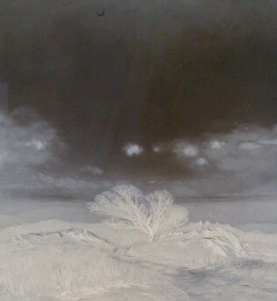
A black and white developed negative of
the oil painting The Evening Moon.
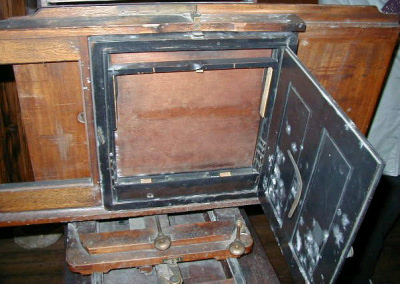
This shows the back of the camera. The door opens to reveal
a ground glass plate onto which the inverted image coming
through the lens could be seen and focused. Until the
development of plastic negatives, glass negatives were used.
A blank negative was then inserted and the image captured.
On occasion Bert would use the glass type, even after plastic
ones were available
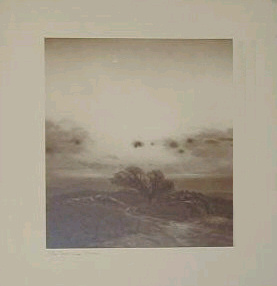
A direct contact print on black and white
photographic paper which has then been
tinted sepia, dried and mounted on a mat.

RSW's comments on the back of The Evening Moon sepia print describing the coloring of the painting.
"Evening colors. Sky running down from pale blue through dull white light, through ochre,
and a band of rose above dark blue evening distant hills. Foreground henna, violet dull yellow
with subtle evening atmosphere."
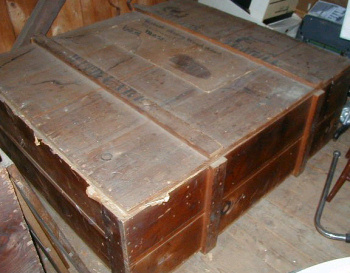
Finally here is one of the large wooden boxes in which
the actual oil painting or paintings selected would be
wrapped and sent by freight to the prospective buyer.
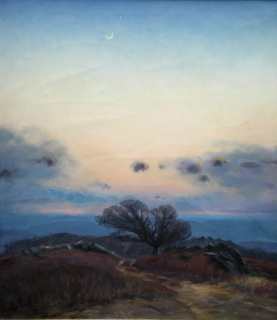
A recent color image of this painting
The Evening Moon.
Many Woodward oil paintings would be selected and sold and delivered by freight in this manner. Others would be sold after people visited the studio to examine them. He frequently allowed people to take paintings home to try on their walls to be sure that they were satisfied with color matches. And, of course, other paintings and chalk drawings sold at professional galleries.
We have all the negatives of the oil paintings which were photographed and sepia print copies of each of them. Very few of the chalk drawings were photographed so we are very appreciative when owners send us color images of any of the chalks. Because many of our images of the paintings are only in sepia, we also especially appreciate obtaining digital color images to add to our website.
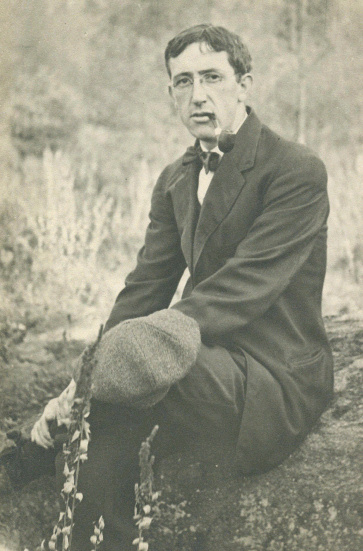
Bert Ashworth when a young man. (Photo courtesy
Dr. Barbara Ash, Professor Human Resources, Learning
and Performance Programs, Suffolk University, Boston
- and great niece of Herbert Ashworth)
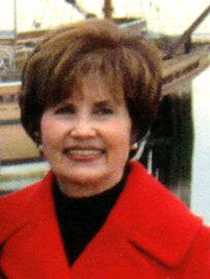
Many thanks to Dr. Barbara Ash
for information and photographs
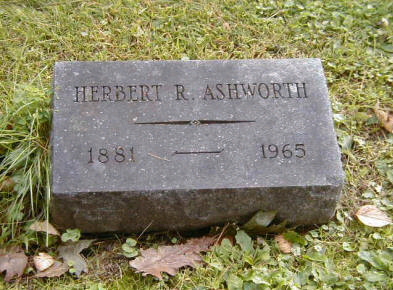
Bert was buried in the Arms Cemetery in Shelburne Falls
MLP
January, 2007

